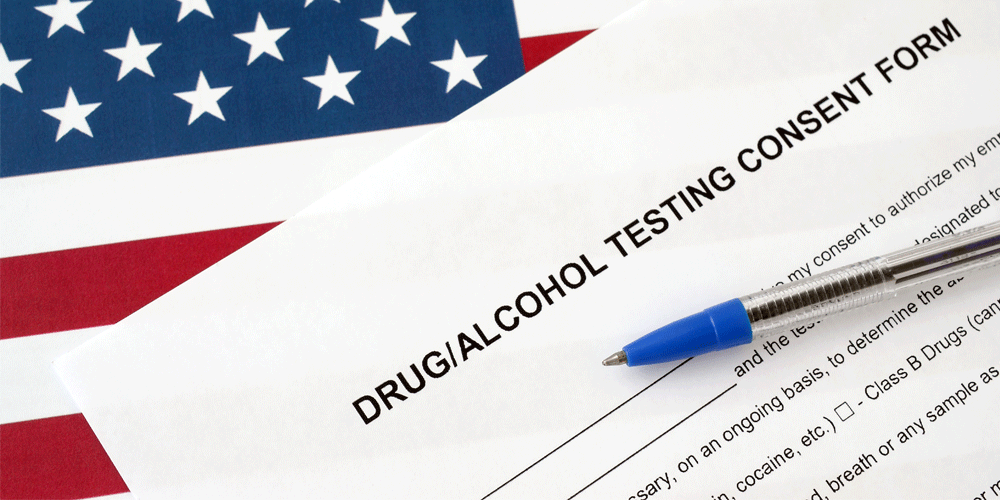Kelli has been in the trucking industry since 2003. She got her start working in compliance for a trucking carrier that specialized in government freight. She has been the compliance manager with ATS since 2017.
You may have heard about the Drug and Alcohol Clearinghouse and the sheer volume of drivers who have been sidelined since its implementation in early 2020. In fact, you can even look at Clearinghouse monthly reports and see why drivers received violations (including which substance was identified in their system when they failed a drug test).
But are you struggling to understand the Clearinghouse, what it is, and what it means for you? You’re not the only one.
At Anderson Trucking Service (ATS), we're committed to helping you understand the purpose of the Clearinghouse and make the registration process easier for you to navigate.
In this article you’ll learn:
- What the Clearinghouse is
- How trucking companies use the Clearinghouse
- How drivers can use the Clearinghouse
- How to register in the Clearinghouse
When you finish reading, you’ll have clarity on the Clearinghouse and you’ll know how to register in the system.
What is the Drug and Alcohol Clearinghouse?
On January 6, 2020, the Federal Motor Carrier Safety Administration (FMCSA) implemented the Drug and Alcohol Clearinghouse. It’s a secure online database that lets employers view (authorized) information about drivers’ drug and alcohol program violations. Trucking companies are required to query the Clearinghouse to ensure a current or prospective driver is not prohibited from operating a commercial motor vehicle (CMV).
The program is designed to improve safety on the roads.
Any driver with a commercial driver’s license (CDL) or a commercial learner’s permit (CLP) is covered by the Clearinghouse.
Failed drug or alcohol screenings collected before January 6, 2020, aren’t in the system.
How do Companies Use the Drug and Alcohol Clearinghouse?
The Drug and Alcohol Clearinghouse is used by trucking companies to view drug and alcohol violation history.
Any failed drug/alcohol test or a refusal to take a drug/alcohol test will be reported to the Clearinghouse, which compiles data on each driver. Companies must report failed drug/alcohol tests, actual knowledge, and/or test refusals to the Clearinghouse within two days. Actual knowledge is information that proves a driver was driving their CMV while under the influence (such as receiving a DUI in their CMV).
All drivers with a CLP or CDL are in the Clearinghouse and will either be labeled as “not prohibited” or “prohibited.” Not prohibited drivers are drivers that haven't failed a test. Prohibited drivers have failed a drug/alcohol screening and are prohibited from driving a CMV until they complete a substance abuse professional (SAP) program.
Beginning on November 18, 2024, state driver licensing agencies will be required to use the Clearinghouse. Upon learning that a driver is prohibited from operating a CMV due to a drug/alcohol violation, the driver’s CLP or CDL privileges must be removed from their driver’s license within 60 days. The driver will need to reapply to get their CDL once they complete a SAP program and are cleared to return to duty.
This change will only affect drivers with a prohibited status in the Clearinghouse.
When a new driver is hired or signs on as an independent contractor, trucking companies run a full query with the Clearinghouse. You have to approve the request and consent to the data retrieval. The trucking company will see your name and status (prohibited or not prohibited). The downgraded license is also shown on motor vehicle records (MVR), a consumer report commonly run by driver recruiters hiring new drivers.
Drivers that are prohibited cannot be hired or sign on to drive with the company.
These queries can even be run at weigh stations. If a driver is driving while prohibited, they'll be pulled off the road immediately.
The Clearinghouse program will put a definite stop to any truck drivers who've ever failed a drug or alcohol screening and crossed their fingers and hoped that they wouldn’t get caught.
That’s because trucking companies are required to do a limited query on all current drivers annually. Drivers sign a consent form upon hiring or signing an independent contract agreement (that lasts the duration of their employment or contract) to approve the retrieval of their drug/alcohol screening history in a limited query.
If drivers happen to have anything on their record, the company has 24 hours to get consent from the driver to run a full query.
This may catch drivers who have started the process of applying for a new trucking job. During the pre-employment screening, they may have failed the drug screening. Because they failed, they may decide to just stay at their current trucking company. In that case, a driver who was not prohibited during a full query when they originally started with the company may show up as prohibited during a limited query.
Previously, companies could only rely on work verifications for drug and alcohol screening information. If recruiters didn’t catch all the companies a driver worked for, the driver didn’t provide all the necessary information or companies didn’t provide work verification information for the driver, drug and alcohol screening information could’ve been missed.
With the Clearinghouse, there's one centralized location to house all the information.
Not only does the database track prohibited and not prohibited status, but it also keeps track of drivers’ progress in the SAP program and their return-to-duty status.
How Do Drivers Use the Clearinghouse?
There are three primary ways drivers can use the Clearinghouse:
- To provide electronic consent
- To review Clearinghouse records
- To identify a substance abuse professional (SAP)
To carry out these three tasks, you’ll need to register in the system first.
Let’s learn more about the ways you can utilize the Clearinghouse.
Consent to an Information Release
For trucking companies to complete a full query, you, the driver, have to log into the Clearinghouse and consent to the release of your drug and alcohol screening information.
Failure to provide consent prohibits you from working for the trucking company requesting the query.
Review Your Record
It’s important to review your Clearinghouse record from time to time. There's a chance that incorrect information could’ve been entered into the system. If that’s the case, you can initiate the process to get the information removed or revised.
Identify a SAP
If you have a failed drug or alcohol test on your record and you’re undergoing a SAP program so that you can drive a CMV again, you can track and review your progress in the Clearinghouse.
How to Register in the Clearinghouse
To register in the Clearinghouse, you must first create an account and click “Log In” in the upper right-hand corner.
Once there, you will create an account using your email address. You’ll be sent an email from the Clearinghouse to confirm your email address. Once your email address is confirmed, you will create a password and complete a user verification process. This ensures the right person is using the proper credentials. You'll go through the process of setting up two authentication methods. Once you’ve done this, you’ve successfully created your account.
After your account is made, you must register for the Clearinghouse. When you’re logged in, you will select your role as a driver and proceed to enter your contact information, preferred contact method, and your CDL or CLP information. Please note: once your CDL or CLP information is verified, it cannot be edited.
Once you accept the Clearinghouse terms and conditions, your registration is complete and you’ll be directed to a dashboard.
We’ve put together a video that clearly explains the Clearinghouse registration process if you’d like some additional assistance.
Understanding the SAP Program
Many drivers who’ve not switched companies in the past several years haven’t registered for the Clearinghouse. If you don’t plan on leaving your current company, you may never create an account and register within the Clearinghouse.
However, if you’d like to keep track of your Clearinghouse information or you think you may switch trucking companies in the near future, registering in the Clearinghouse now will make sure you’re prepared when prospective companies run pre-employment screenings and full queries.
If you’ve never had an issue with a drug/alcohol screening, you’ll always be labeled in the Clearinghouse as not prohibited.
However, if you’ve failed a drug or alcohol screening and you’d like to drive again in the future, you’ll need to go through the SAP program.
We’ve put together an article to help you learn more about the SAP program and which companies you can work with after you’ve failed a drug/alcohol screening and undergo a SAP program.
Perhaps you’re not concerned about a failed drug test, but you are planning to switch companies soon and you don’t want to make a mistake. Our guide to the top mistakes truck drivers make when switching jobs can help you avoid common mistakes.




